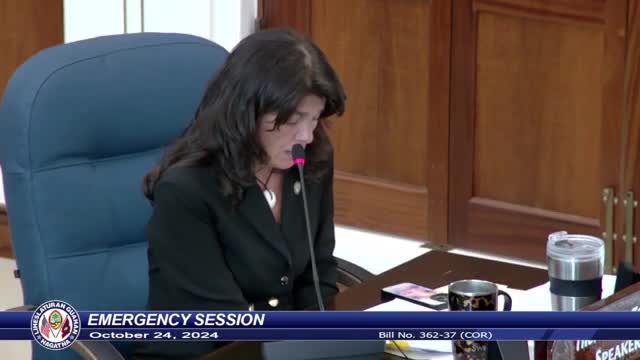Emergency procurement delays threaten ambulance fleet readiness
October 24, 2024 | General Government Operations and Appropriations , Legislative, Guam
This article was created by AI summarizing key points discussed. AI makes mistakes, so for full details and context, please refer to the video of the full meeting. Please report any errors so we can fix them. Report an error »

In a recent government meeting, concerns were raised regarding the management and procurement of emergency vehicles, particularly ambulances, amid ongoing supply chain challenges. Acting Fire Chief addressed the pressing issue of maintaining an adequate fleet, noting that the lifespan of ambulances is typically three to five years. The discussion highlighted the need for a systematic approach to ensure timely purchases and repairs to avoid operational shortages.
The Chief acknowledged that the COVID-19 pandemic had exacerbated supply chain issues, leading to delays in the procurement process. Currently, the department operates five ambulances, with plans to repair two more and procure parts for an additional five. However, the timeline for these repairs remains uncertain due to the General Services Administration (GSA) being closed for requisitions until the new fiscal year.
Senator Paris questioned the management of the fleet, suggesting that better planning could have prevented the current situation. The Chief responded that the backlog in manufacturing had hindered timely replacements. The meeting also touched on the potential use of emergency procurement processes to expedite repairs and purchases, which the Chief admitted had not yet been utilized.
Budget constraints were a recurring theme, with discussions about funding sources for new vehicles potentially coming from federal relief funds. The Chief assured that there were no anticipated losses in funding but acknowledged the limited number of vendors available for repairs, which could complicate the procurement process.
As the meeting concluded, the urgency of addressing these issues was clear, with officials emphasizing the need for a proactive strategy to ensure that the community's emergency services remain adequately equipped and operational.
The Chief acknowledged that the COVID-19 pandemic had exacerbated supply chain issues, leading to delays in the procurement process. Currently, the department operates five ambulances, with plans to repair two more and procure parts for an additional five. However, the timeline for these repairs remains uncertain due to the General Services Administration (GSA) being closed for requisitions until the new fiscal year.
Senator Paris questioned the management of the fleet, suggesting that better planning could have prevented the current situation. The Chief responded that the backlog in manufacturing had hindered timely replacements. The meeting also touched on the potential use of emergency procurement processes to expedite repairs and purchases, which the Chief admitted had not yet been utilized.
Budget constraints were a recurring theme, with discussions about funding sources for new vehicles potentially coming from federal relief funds. The Chief assured that there were no anticipated losses in funding but acknowledged the limited number of vendors available for repairs, which could complicate the procurement process.
As the meeting concluded, the urgency of addressing these issues was clear, with officials emphasizing the need for a proactive strategy to ensure that the community's emergency services remain adequately equipped and operational.
View full meeting
This article is based on a recent meeting—watch the full video and explore the complete transcript for deeper insights into the discussion.
View full meeting